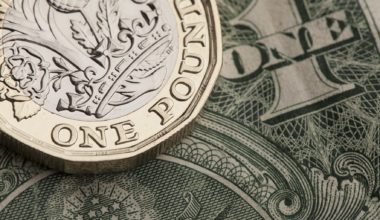Sentiment buoyed by Jackson Hole
In the final days of August, global markets turned their attention to the US Federal Reserve’s annual Jackson Hole meeting, which concluded on Friday 27th. This meeting is usually used by the US central bank to indicate to markets its outlook for monetary policy in the world’s largest economy.
At this year’s event, the Fed indicated that its monthly bond purchases would continue until the end of 2021, while interest rates would remain unchanged until the Fed’s employment and inflation goals are met. This led many observers to conclude that the central bank thinks it can manage inflation expectations and keep markets steady at the same time.
In a lengthy statement, Fed Chairman Jerome Powell said that a number of barriers to full employment were “likely fading” (school closures and higher unemployment benefits) as the vaccination rate rose. He also reiterated the central bank’s stance on inflation. He told listeners that there was a lack of “broad-based” inflationary pressures, and that recent inflation spikes were due to a “narrow group of goods and services” that were directly impacted by the Covid-19 pandemic and re-opening economies. He also noted that the Fed is seeing inflation begin to moderate in some areas, that wage increases were in-line with the Fed’s long-term inflation goals, and that global disinflationary forces could be counted on to persist for some time. Finally, he added that American households and businesses seem to agree with the Fed’s view on inflation, as the disparity between current inflation and near-term expectations (which are high) and long-term expectations (which are lower) shows.
For the time being, markets are interpreting this positively. More monetary support for longer and inflation being ‘transitory’ are bullish for risk assets, and the market is taking the Fed at its word.
US recovery stable / China contains Delta outbreak / European earnings strong
US GDP increased at an annual rate of +6.5% in Q2 2021, driven by strong personal consumption expenditure, non-residential fixed investment, exports, and state and local government spending. The latest US government forecast for consumer prices predicts +4.8% in Q4 2021, year-on-year (YoY), followed by a decline in 2022 down to 2.5%. This forecast is consistent with the Fed’s views, as well as many independent opinions, that higher inflation will be transitory. The S&P CoreLogic Case-Shiller Home Price Index, which measures home prices across twenty major US cities, rose +1.77% in June, bringing the YoY gain to +19.1%, the largest jump since 1987 and further evidence of a buoyant US housing market. These latest data points continue to indicate a healthy US economic recovery and support the view that higher inflation will give way to stable inflation in coming quarters.
Some signs of weakness have emerged in the Chinese economy, but there is little cause for concern – Beijing has plenty of corrective tools at its disposal should it need them. The Non-Manufacturing PMI for August came in at 47.5, the lowest reading since the height of the pandemic in early 2020. The Official Manufacturing PMI for June came in at 50.1, slightly lower than the 50.2 analysts expected. The drop-off in PMIs (confidence indicators) is a knock-on effect of the Delta variant’s spread through China, as Beijing and many other major cities have announced travel restrictions and apartment lockdowns. However, by last week daily reports of new domestically transmitted cases had fallen significantly and the Health Commission said that the risk of a nationwide outbreak had been contained. A bounce back in the Chinese economic recovery would be a major boost for global markets.
According to FactSet, more-than 85% of the companies in the STOXX Europe 600 Index have now reported Q2 earnings – and growth rates in corporate profits have been very strong. In March, analysts expected to see an impressive +155% increase in earnings per share (EPS). However, reports so-far have outstripped this forecast average, and Q2 EPS growth currently stands at +248%. As we have seen in the US, industrial companies have proved to be the stand-out sector this quarter. Europe’s industrial sector saw earnings growth of +438% YoY in Q2. Of course, these numbers are lapping a low base in 2020 (the height of the pandemic), however the stronger than expected numbers are still welcome and indicative of a stronger than forecast recovery in the European economy.
Disclaimer: The views expressed in this article are those of the author at the date of publication and not necessarily those of Dominion Capital Strategies Limited or its related companies. The content of this article is not intended as investment advice and will not be updated after publication. Images, video, quotations from literature and any such material which may be subject to copyright is reproduced in whole or in part in this article on the basis of Fair use as applied to news reporting and journalistic comment on events.


